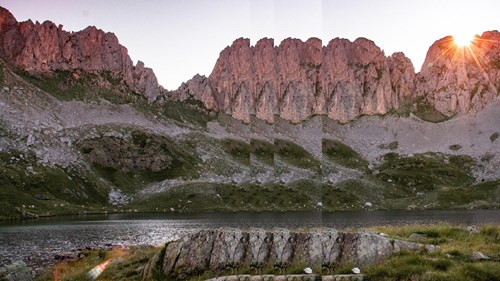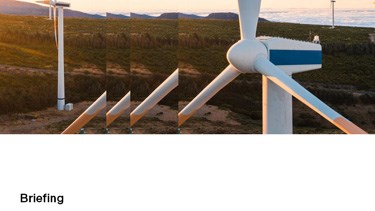Lliuya v RWE – Landmark ruling against major greenhouse gas emitters?
The Hamm Higher Regional Court (Oberlandesgericht Hamm) (case I-5 U 15/17) dismissed the appeal filed by Peruvian mountain farmer Saúl Luciano Lliuya against the judgment of the Essen Regional Court (Landgericht Essen) (case 2 O 285/17) in its judgement of 28 May 2025 dismissing his action. Lliuya sues RWE AG (RWE), Europe’s largest single emitter of CO₂, for a declaration that RWE must bear a proportionate share (corresponding to its share of global greenhouse gas emissions) of the costs of appropriate protective measures to protect his property from flooding from the Palcacocha glacial lake. The Essen Regional Court had dismissed the action in 2016. It held that RWE was not a disturber within the meaning of section 1004(1) of the German Civil Code (Bürgerliches Gesetzbuch – BGB), as there was no equivalent and adequate causation of the alleged interference. In other words, RWE could not be held liable for interferences in distant Peru that were based on the emissions of many greenhouse gas emitters.
The Hamm Higher Regional Court did not concur with this legal position, but dismissed the appeal anyway. It based its dismissal on the fact that the claimant, who bore the burden of proof, had not succeeded in proving imminent future interference with his property within the meaning of the second sentence of section 1004(1) of the German Civil Code. The probability that water from the glacial lake would reach the claimant’s property and interfere with his property in the next 30 years was only about 1%. In addition, in the event of flooding, the water on the claimant’s property would only rise a few centimetres and would not flow strongly enough to cause serious damage to the house.
Essentially conclusive claim
What is remarkable about this ruling is that the Hamm Higher Regional Court, although it ultimately rejected the claim, first spends 56 pages on substantiating the conclusiveness of the claimant’s arguments, addressing and rejecting all of RWE’s objections.
The Court therefore considers that a claim for the desired declaration is possible in principle based on the second sentence of section 1004(1) in conjunction with sections 677 and 812 of the German Civil Code. Four arguments are particularly noteworthy:
(1) The Hamm Higher Regional Court counts the emissions of RWE’s subsidiaries as RWE’s own, arguing that it manages and controls the group. It therefore regards the group subsidiaries as vicarious agents of the parent company.
(2) If the (protective) measures were to be seriously and definitively refused, determining the obligation of the disturber to bear the costs could come into consideration even before actual expenses are incurred, the Court said.
(3) Unlike the court of first instance, the Higher Regional Court affirms causality, arguing that the alleged threat would be significantly lower without RWE’s emissions. Every fraction of a degree of global warming makes the glacier melt faster and more drastically. Thus the Higher Regional Court does not consider the fact that the defendant is only one emitter among a whole series of industrial CO₂ emitters, i.e. one disturber among many, to be a reason to dismiss the claim. The Court considers that liability should only be adjusted to reflect the relevant share of causation, i.e. CO₂ emissions.
(4) Finally, according to the reasoning of the Higher Regional Court, the imminent interference is also unlawful because what matters is not the unlawfulness of the interfering action, but the injustice of the outcome. RWE is therefore not helped by the permits and approvals granted by the authorities for operating the emitting plants, nor by the certificates under the German Greenhouse Gas Emissions Trading Act (Treibhausgas-Emissionshandelsgesetz – TEHG). In the Higher Regional Court’s opinion, these do not justify an obligation for the claimant to tolerate the emissions. The Hamm Higher Regional Court thus contradicted the decision of the Munich Higher Regional Court (case 32 U 936/23), which ruled in a climate lawsuit against the car manufacturer BMW that BMW had exercised the due care required in business dealings by complying with the requirements of the EU’s passenger car emission regulations.
Further claims expected – but also different decisions
Overall, the decision handed down by the Hamm Higher Regional Court is likely to give new impetus to similar claims. Nevertheless, the Court’s reasoning is open to criticism in many respects. In particular, other judicial decisions are likely regarding whether the claimant has conclusively demonstrated the causality of the contributing factor. These decisions, based on the large number of anthropogenic emission sources and emission contributions, the self-reinforcing nature of climate change and the possibilities of modern attribution research, will prevent conclusive demonstration of a legally tenable cause-and-effect relationship. The outcome will depend on how the circumstances of the individual case are presented and on setting out the litigation strategy early on.
Contact
Share
Well
informed
Subscribe to our newsletter now to stay up to date on the latest developments.
Subscribe now










